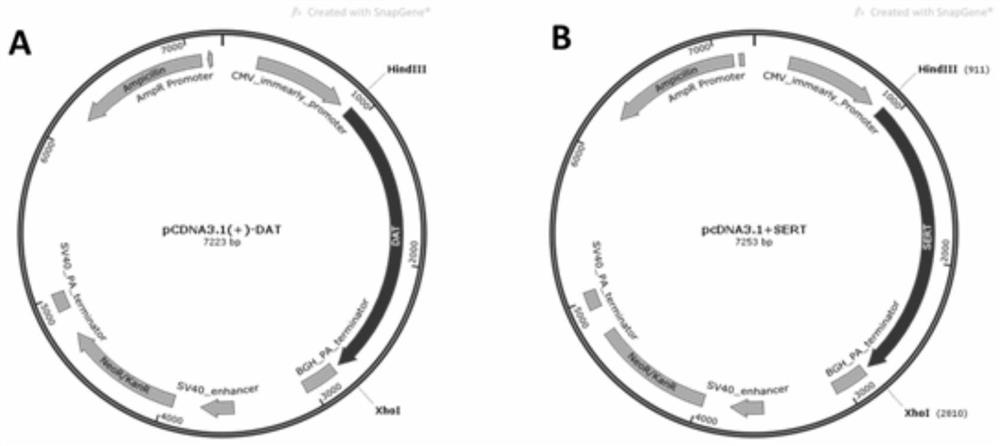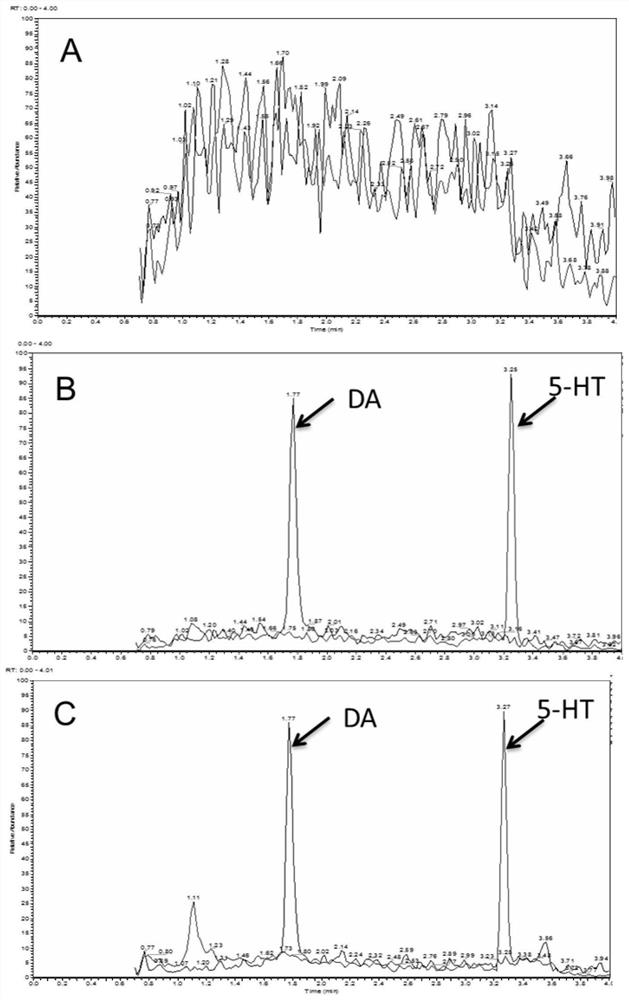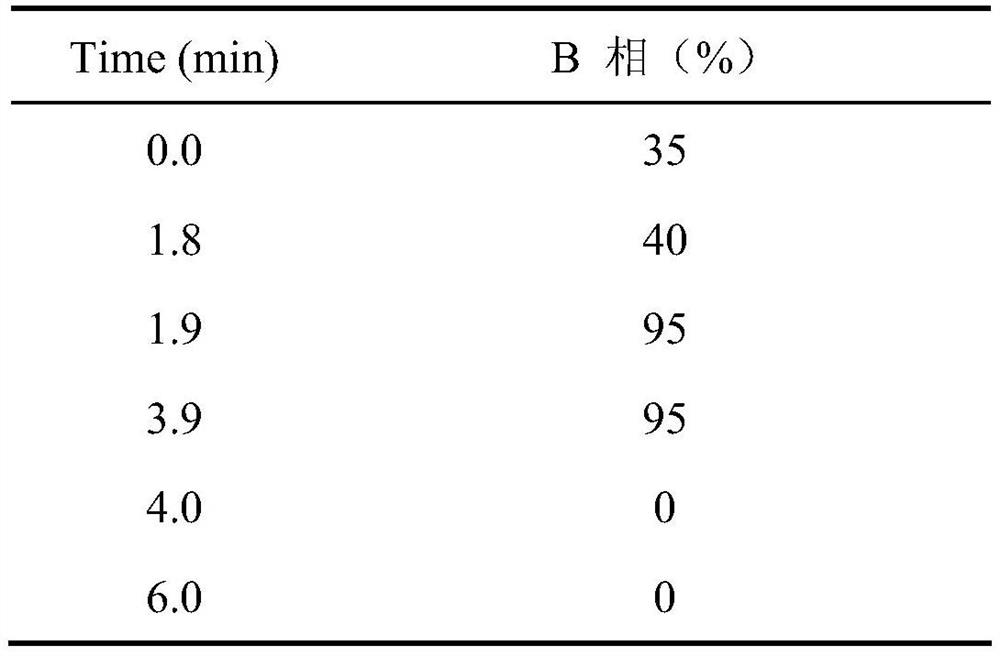Method for analyzing action of drugs on monoamine transporter based on liquid chromatography-mass spectrometry
A technology of mass spectrometry and liquid chromatography, which is applied in the field of liquid chromatography-mass spectrometry analysis of the action of drugs on monoamine transporters, can solve the problems of expensive substrates, hidden radioactive safety hazards, etc., and achieve high operability and safety performance, high sensitivity, and a wide range of applications
- Summary
- Abstract
- Description
- Claims
- Application Information
AI Technical Summary
Problems solved by technology
Method used
Image
Examples
Embodiment 1
[0021] 1. Construction of DAT and SERT overexpression cell lines
[0022] 1.1 Cell culture
[0023] HEK293 cells were cultured in DMEM medium containing 10% standard fetal bovine serum, 60 U / mL-1 penicillin, and 100 μmol / L streptomycin at 37°C and 5% CO 2 , The humidity is saturated, and the culture medium is replaced every 72 hours. After the HEK293 cells reached more than 80% confluence, they were passaged at a ratio of 1:4.
[0024] 1.2 DAT and SERT plasmids
[0025] Plasmid pcDNA3.1-DAT and pcDNA3.1-SERT plasmid maps are as follows figure 1 As shown, the full-length cDNAs of the genes DAT and SERT were inserted into the pcDNA3.1 vector between the HindIII and Xhol restriction sites, respectively.
[0026] 1.3 Transfection of DAT and SERT overexpression HEK293 cells
[0027] HEK293 cells one day in advance according to 0.25-1x10 6 The density of the cells was spread in 6-well plates and cultured overnight to keep the cell density at 70%-90% during transfection.
[0...
Embodiment 2
[0046] Example 2 Establishment of LC-MS / MS analysis technology for detecting DA and 5-HT in HEK293 cells
[0047] 2.1 Sample pretreatment
[0048] Wash HEK293 cells transfected to express DAT and SERT gently twice with 500 μL KHB buffer solution, add 200 μL 0.2M HOAc solution, overnight at 4°C, collect the lysate the next day and transfer to a centrifuge tube, centrifuge at 12,000 rpm at 4°C Take the supernatant, combine the lysates of DAT and SERT at the same drug concentration, take 350 μL of the sample to be tested, 50 μL of IS working solution, 50 μL of 7% ammonia solution and 250 μL of 0.2% PBA buffer solution (pH 8.5) and mix well , slowly load the mixed solution to pre-activated with 200μL MeOH and 200μL 0.2M NH 4 Cl solution (pH 8.5) equilibrated on the OasisHLB 96-well μElution microextraction plate, and then 200 μL 0.2M NH 4 After washing with Cl solution three times, it was vacuum filtered until completely dry, and then eluted with 100 μL of 5% MeOH in 0.2M HOAc s...
Embodiment 3
[0066] Example 3 The reuptake inhibitory effect test of drugs on DAT and SERT
[0067] Follow the steps below:
[0068] 24 hours before the experiment, the HEK293 cell lines expressing DAT and SERT were respectively transfected and plated for culture. The cells were gently washed twice with 500 μL of 37°C preheated KHB buffer solution, then 250 μL of KHB buffer solution containing serial concentrations of drugs were added to incubate at 37°C for 20 minutes, and then DA (to examine DAT) and 5-HT (to examine SERT) were added. 50 μL of KHB buffer solution, so that the final concentration of DA is 1 μM, and the final concentration of 5-HT is 1 μM. Incubate at 37°C for 15 minutes, discard the reaction solution to terminate the reaction, and operate according to "2.1 Sample pretreatment". For non-specific binding, 250 μL of KHB buffer solution containing 10 μM mazindol (to examine DAT) and 10 μM fluoxetine (to examine SERT) were added respectively, and no drug was added to the bla...
PUM
 Login to View More
Login to View More Abstract
Description
Claims
Application Information
 Login to View More
Login to View More - R&D
- Intellectual Property
- Life Sciences
- Materials
- Tech Scout
- Unparalleled Data Quality
- Higher Quality Content
- 60% Fewer Hallucinations
Browse by: Latest US Patents, China's latest patents, Technical Efficacy Thesaurus, Application Domain, Technology Topic, Popular Technical Reports.
© 2025 PatSnap. All rights reserved.Legal|Privacy policy|Modern Slavery Act Transparency Statement|Sitemap|About US| Contact US: help@patsnap.com



